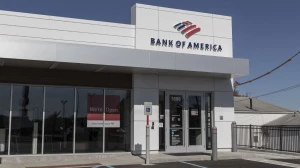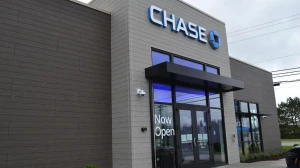
Daily ATM Withdrawal Limits, How Many ATM Transactions Are Free?
Various banks have different daily ATM withdrawal limits, ranging from $300 to $5,000, depending on the bank and your account type or relationship with the bank.
by Sai V
Published Sep 04, 2023 | Updated Sep 04, 2023 | 📖 10 min read
On This Page
- Daily ATM Withdrawal Limits
- How Many ATM Transactions Are Free?
- How Much Can You Withdraw From an ATM Per Day?
- ATM Withdrawal Limit Bank of America
- How Do I Raise My ATM Withdrawal Limits?
- Which ATMs Offer the Highest Withdrawal Limits?
- What Are Some Ways to Bypass ATM Withdrawal Limits?
- What Are Some Quick Ways to Get Cash When You Need It?
Daily ATM Withdrawal Limits
Banks have varying policies regarding the maximum amount of cash you can withdraw from your checking account at an ATM each day. These limits can differ not only between big banks and regional or community banks but also between traditional brick-and-mortar banks and online banking institutions. It's worth noting that exceptions to these limits may apply depending on the type of account you hold and your banking relationship.
Below is a comparison of daily ATM withdrawal limits at leading banks, encompassing both online banks and traditional brick-and-mortar financial institutions.
|
Bank Name |
Withdrawal Limit |
|
Ally Bank |
$1,000 |
|
Bank of America |
$1,000 |
|
BMO Harris |
$1,000 |
|
Capital One |
$1,000 |
|
Charles Schwab Bank |
$1,000 |
|
Chase Bank |
$500 - $3,000 |
|
Citi |
$1,500 - $2,000 |
|
Citizens Bank |
$500 |
|
Discover Bank |
$510 |
|
Fifth Third Bank |
$810 |
|
HSBC |
$500 - $1,000 |
|
KeyBank |
$300 - $1,000 |
|
Morgan Stanley Bank |
$1,500 - $5,000 |
|
PNC Bank |
$500 - $1,500 |
|
Regions Bank |
$808 |
|
Truist |
$500 - $3,000 |
|
TD Bank |
$1,250 - $1,500 |
|
Union Bank |
$500 |
|
U.S. Bank |
Dependent on relationship |
|
Wells Fargo Bank |
Dependent on relationship |
How Many ATM Transactions Are Free?
In the United States, the number of free ATM transactions can vary widely depending on the specific bank or financial institution you are a customer of. According to the Federal Reserve Payments Study of 2019, there were a staggering 3.4 billion on-us ATM cash withdrawals in 2018. However, whether these transactions are free or subject to fees largely depends on the policies set by individual banks.
Many banks do offer a limited number of free ATM withdrawals each month to their account holders as part of their service package. These free transactions are typically made at ATMs owned by the account holder's depository institution. Beyond the allotted free transactions, additional ATM withdrawals might incur fees, and these fees can vary from bank to bank.
Therefore, it's essential for consumers to review their bank's policies and fee schedules to determine how many free ATM transactions they are entitled to and what fees might apply for exceeding those limits.Since there is no standardized nationwide policy regarding the number of free ATM transactions in the USA, it's crucial for consumers to be aware of their specific bank's terms and conditions.
Some banks may even reimburse customers for fees incurred at out-of-network ATMs up to a certain limit. To gain a clear understanding of how many ATM transactions are free, it's advisable for individuals to consult with their own bank or financial institution and review their account agreements to ensure they are making informed choices about ATM usage to avoid unnecessary fees.
How Much Can You Withdraw From an ATM Per Day?
The amount you can withdraw from an ATM per day varies depending on multiple factors, primarily dictated by your bank and account details. In general, daily ATM withdrawal limits range between $300 and $5,000, with most individuals having limits typically falling within the range of $500 to $3,000. It's important to keep in mind that your specific daily withdrawal limit usually resets on the following day.
However, some banks may base their limits on a 24-hour period, meaning that if you make a withdrawal at a specific time, you may need to wait until the same time the next day for your limit to reset. The exact limit for your account can also be influenced by other factors like your available account balance and your total daily purchase limit. To ascertain the precise daily withdrawal limit applicable to your account, it's advisable to contact your bank or consult your account documentation.
ATM Withdrawal Limit Bank of America
The ATM withdrawal limit at Bank of America typically stands at $1,000 per account per day. However, this limit can fluctuate based on a variety of factors. The specific type of checking or savings account you hold, the type of ATM or debit card associated with your account, the ATM's capacity, your current account balance, and whether you have overdraft protection all play a role in determining your daily withdrawal limit.
While having overdraft protection may allow you to withdraw more than your available balance up to a certain limit, it's essential to be aware that this can incur additional fees. To get the most accurate and up-to-date information on your ATM withdrawal limit, it's advisable to check your account terms and conditions or contact Bank of America directly.
How Do I Raise My ATM Withdrawal Limits?
To increase your ATM withdrawal limits, the most straightforward approach is to contact your bank or credit union and request an increase. The bank's decision to grant a higher limit can depend on factors like your customer history, account types, and the reason for your request, whether it's for a short-term need or a permanent adjustment.
It's essential to be prepared to provide relevant information and understand that banks have these limits in place primarily for security reasons. If your request is approved, it's crucial to monitor your account closely to safeguard against potential security risks.
Contact Your Bank or Credit Union:
- The first step in increasing your ATM withdrawal limits is to reach out to your bank or credit union.
- You can typically contact them by phone, through online banking, or by visiting a local branch.
Gather Relevant Information:
Before making the request, collect information that might influence the decision, such as:
- Your duration as a customer with the bank.
- The types of accounts you hold.
- Your account history, including average balance and transaction activity.
- Specify whether you are requesting a short-term or permanent increase.
State Your Reason:
- Clearly communicate the reason behind your request for a higher ATM withdrawal limit.
- For instance, if you plan to go on vacation or make a significant purchase, explain the purpose of the increased limit.
Understand Security Concerns:
- Keep in mind that banks implement ATM withdrawal limits primarily for security reasons.
- Be prepared to address how you will safeguard your debit card if the limit is raised.
Monitor Your Account:
- Once your bank approves a higher limit, diligently monitor your account for any unauthorized transactions or unusual activity.
- Promptly report any lost or stolen cards to your bank to prevent unauthorized access.
Temporary vs. Permanent Increase:
- Recognize that banks may be more inclined to grant temporary increases for specific purposes, such as vacations or special events.
- If you seek a permanent increase, be prepared to provide a compelling case and demonstrate responsible account management.
Comply with Bank Policies:
- Ensure strict adherence to your bank's policies and guidelines concerning ATM withdrawals.
- Attempting to exceed your authorized limit or engaging in suspicious activities can lead to account freezes or other repercussions.
Which ATMs Offer the Highest Withdrawal Limits?
When it comes to finding ATMs with the highest withdrawal limits, it's essential to focus on your bank's policies rather than specific ATM locations. The maximum amount you can withdraw in a single transaction or per day depends primarily on your bank or credit union's regulations. These limits can vary significantly among different financial institutions.
Before choosing a bank or opening a new account, it's crucial to carefully review the terms and conditions provided by the institution. These documents will outline the exact ATM withdrawal limits applicable to your account. Opting for a bank with higher withdrawal limits can ensure you have access to the cash you need, especially in situations where you may require a larger sum of money and can't make it to a physical branch.
What Are Some Ways to Bypass ATM Withdrawal Limits?
Visiting the Bank's Branch for Cash Withdrawal:
One effective way to bypass ATM withdrawal limits is by visiting your bank's local branch and interacting with a teller. Typically, bank branches offer higher withdrawal limits compared to ATMs. When you opt for this method, be prepared to provide proper identification, such as your driver's license or passport, and potentially explain the reason for the withdrawal. Banks may have different policies and procedures, so it's advisable to inquire with your specific bank to understand the exact process for accessing cash through a branch. This method can be especially useful for those needing larger amounts of cash beyond the daily ATM limit.
Requesting Cash Back at Checkout:
When making purchases with a debit card at retail stores, another way to bypass ATM withdrawal limits is by requesting cash back at the checkout counter. Some merchants offer this option, allowing you to increase the total amount of your purchase and receive the extra amount in cash. However, similar to ATM withdrawals, there is a limit on how much you can withdraw using this method, which is determined by the store's cash back policy. While it may not be suitable for accessing large sums of cash, it can be a convenient solution for smaller cash needs.
Leveraging Savings Account Withdrawals:
If you've exhausted your daily withdrawal limit from your checking account but have funds in your savings account, some banks permit you to withdraw money from your savings account using your debit card. This can be a viable way to access additional cash when needed. Nonetheless, it's essential to be aware that many banks impose restrictions on the number of withdrawals you can make from a savings account each month. Ensure you're informed about your bank's policies regarding savings account withdrawals and any potential fees or penalties associated with excessive withdrawals.
What Are Some Quick Ways to Get Cash When You Need It?
When in urgent need of cash, there are swift solutions to consider. You can secure funds by using a credit card for a cash advance, exploring paycheck advance apps like Chime and EarnIn (different from payday loans), or contemplating a personal loan for planned expenses with competitive fixed interest rates, especially for those with good credit. However, assessing these options carefully is essential to make a financially sound decision during a cash crunch.
Leveraging Cash Advances:
One swift way to access cash is by utilizing a cash advance through your credit card. This approach essentially involves borrowing money against your available credit line. However, it's crucial to recognize that cash advances often come with higher interest rates compared to regular credit card purchases. Moreover, interest begins accruing right away, and there may be an additional fee associated with this transaction.
Utilizing Paycheck Advance Apps:
Another option to consider is the use of paycheck advance apps like Chime and EarnIn. These apps allow you to receive a portion of your upcoming paycheck in advance. Notably, they usually impose relatively modest fees and do not require a credit check. Nonetheless, it's important to note that your employer may need to have an existing arrangement with one of these apps for you to access this service.
Exploring Personal Loans:
When you require cash for planned expenses, such as home improvements or significant purchases, personal loans can be a rapid and flexible solution. These loans can typically be used for various purposes and are often disbursed promptly, sometimes within a day or two. Moreover, personal loans often offer fixed interest rates, which are frequently lower than those associated with credit cards, particularly if your credit score is in good standing.
Daily ATM Withdrawal Limits - FAQs
1. What's the usual daily ATM withdrawal limit?
Most banks set daily ATM withdrawal limits, typically ranging from $500 to $3,000.
2. How can I increase my ATM withdrawal limits?
Contact your bank to request higher ATM withdrawal limits, citing your reasons and providing necessary information.
3. Which ATMs offer the highest withdrawal limits?
ATM withdrawal limits depend on your bank, so choose one with higher limits if needed.
4. How can I get more cash if I've reached my ATM limit?
Visit a bank branch, request cash back while shopping, or use a savings account (if allowed) to bypass ATM limits.
5. What are quick ways to access cash in emergencies?
Options include credit card cash advances (be cautious of high fees), paycheck advance apps, or considering personal loans for planned expenses instead of relying solely on ATMs.




